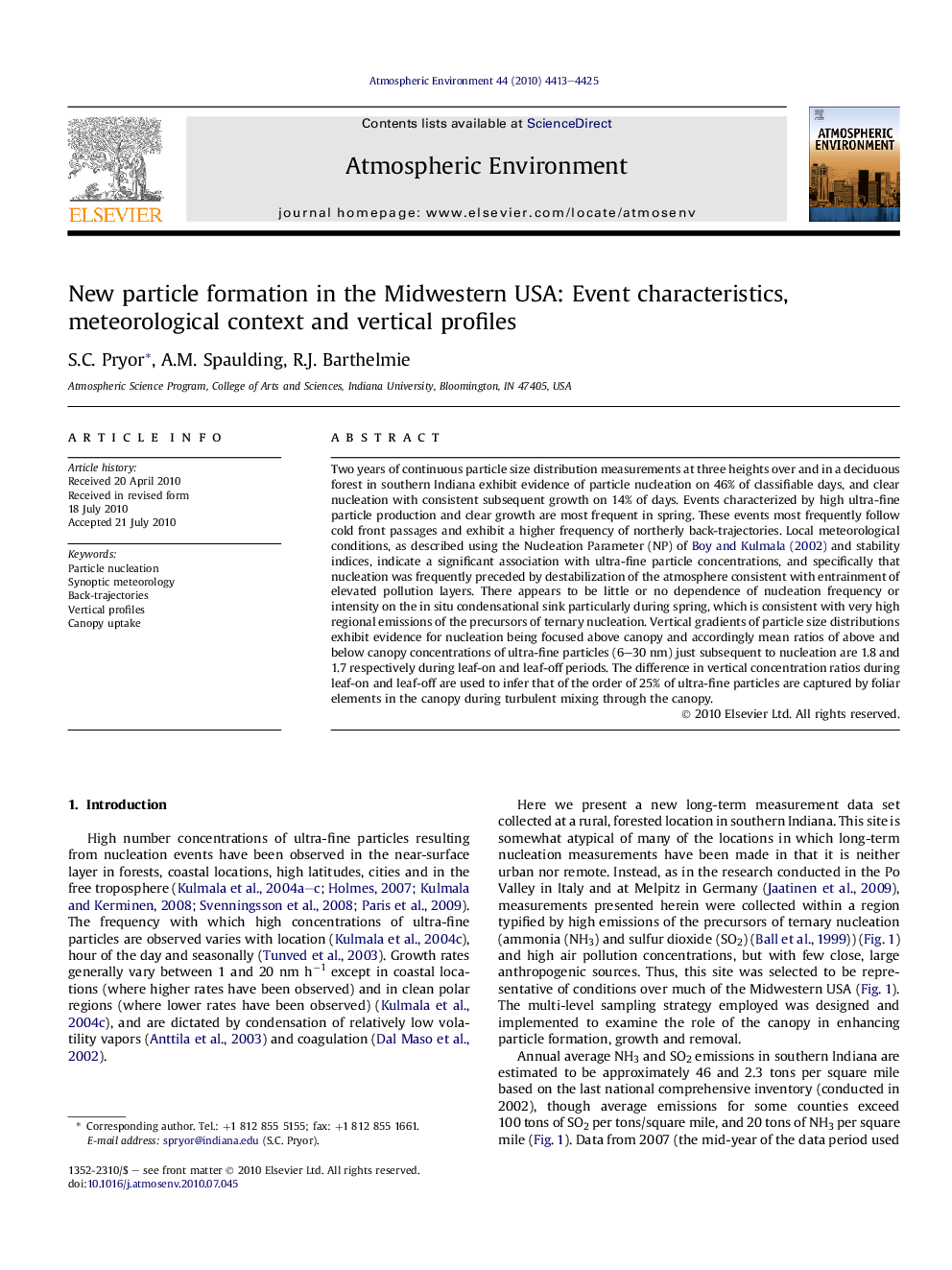| Article ID | Journal | Published Year | Pages | File Type |
|---|---|---|---|---|
| 4440422 | Atmospheric Environment | 2010 | 13 Pages |
Two years of continuous particle size distribution measurements at three heights over and in a deciduous forest in southern Indiana exhibit evidence of particle nucleation on 46% of classifiable days, and clear nucleation with consistent subsequent growth on 14% of days. Events characterized by high ultra-fine particle production and clear growth are most frequent in spring. These events most frequently follow cold front passages and exhibit a higher frequency of northerly back-trajectories. Local meteorological conditions, as described using the Nucleation Parameter (NP) of Boy and Kulmala (2002) and stability indices, indicate a significant association with ultra-fine particle concentrations, and specifically that nucleation was frequently preceded by destabilization of the atmosphere consistent with entrainment of elevated pollution layers. There appears to be little or no dependence of nucleation frequency or intensity on the in situ condensational sink particularly during spring, which is consistent with very high regional emissions of the precursors of ternary nucleation. Vertical gradients of particle size distributions exhibit evidence for nucleation being focused above canopy and accordingly mean ratios of above and below canopy concentrations of ultra-fine particles (6–30 nm) just subsequent to nucleation are 1.8 and 1.7 respectively during leaf-on and leaf-off periods. The difference in vertical concentration ratios during leaf-on and leaf-off are used to infer that of the order of 25% of ultra-fine particles are captured by foliar elements in the canopy during turbulent mixing through the canopy.
